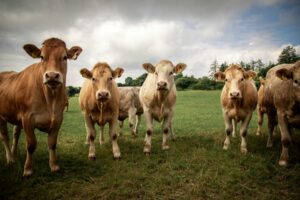Cultivating one hectare of maize used to be an arduous task for Precious Banda, a farmer in Zambia. It would take her hundreds of hours to prepare her land before sowing and to keep it weed-free until harvest – equipped with nothing but a small hoe. She says it was backbreaking work: “I can still feel it.” For a few years now she has hired a tractor, and a neighbour sprays herbicides for her. “Life has become so easy,” she says.
But she has also noticed changes around her farm. There are fewer bees and – most worrying for her – fewer caterpillars, which used to make a delightful dish.
Precious Banda’s story is a perfect example of the situation millions of African farmers face.
Agricultural development is high on the policy agenda of African countries, as seen in the Agenda 2063 of the African Union. But while it’s needed to reduce poverty and hunger, agricultural development often clashes with biodiversity, which is declining at an alarming rate. Losing biodiversity could reduce food security by undermining ecosystem services like pollination, nutrient cycling and maintenance of water supplies. Wild food sources could also be lost.
In a new paper, we as researchers in economics, agronomy and ecology emphasise the importance of biodiversity-smart agricultural strategies. With Precious Banda’s story in our minds, we argue that such strategies need to pay much more attention to agricultural labour dynamics.
Biodiversity and agricultural labour
Biodiversity is lost when agricultural land expands and when farming is more intense. In Africa, 75% of agricultural growth comes from farmland expansion into forests and savannas. This leads to habitat loss and fragmentation. Farming more intensely curtails expansion, but may make the landscape less biodiverse and often leads to the use of more chemicals such as pesticides.
The importance of biodiversity-friendly agriculture is starting to be recognised more widely. But efforts to encourage it often neglect trade-offs with farm labour needs. We argue that neglecting these needs will undermine the success of biodiversity conservation efforts.
Farmers can reduce heavy labour by adopting technologies such as mechanisation and herbicides. For example, our previous research in Zambia showed tractors cut land preparation time from 226 to 10 hours per hectare. And in Burkina Faso, herbicides are referred to as “mothers’ little helpers” because they reduce women’s work in the fields.
But labour-saving technologies can negatively affect biodiversity through farmland expansion, farmland simplification, land degradation and spillover effects. For example, in an earlier study in Benin, Kenya, Nigeria, and Mali, we found that mechanisation sometimes led to the removal of trees and hedges from farms, and changed plot sizes and shapes. This resulted in a loss of farm diversity and of a healthy “patchwork” of habitats. Pesticides can harm soil life, water systems and insect populations if badly regulated and managed, as is often the case.
Biodiversity-enhancing technologies have the opposite problem: farmers often don’t adopt them because they add to the labour burden. Examples include inter-cropping (growing different crops close to each other) and planting basins (shallow indentations in the soil to provide a suitable environment for crops and place inputs). In Zimbabwe, a study noted that planting basins could be labour-intensive without always increasing yields.
Farmers typically adopt technologies and practices that use the least labour and provide high and stable yields, but those can be bad for biodiversity conservation.
What’s needed instead are biodiversity-smart technologies that enable farming with low labour, high yields and high biodiversity.



